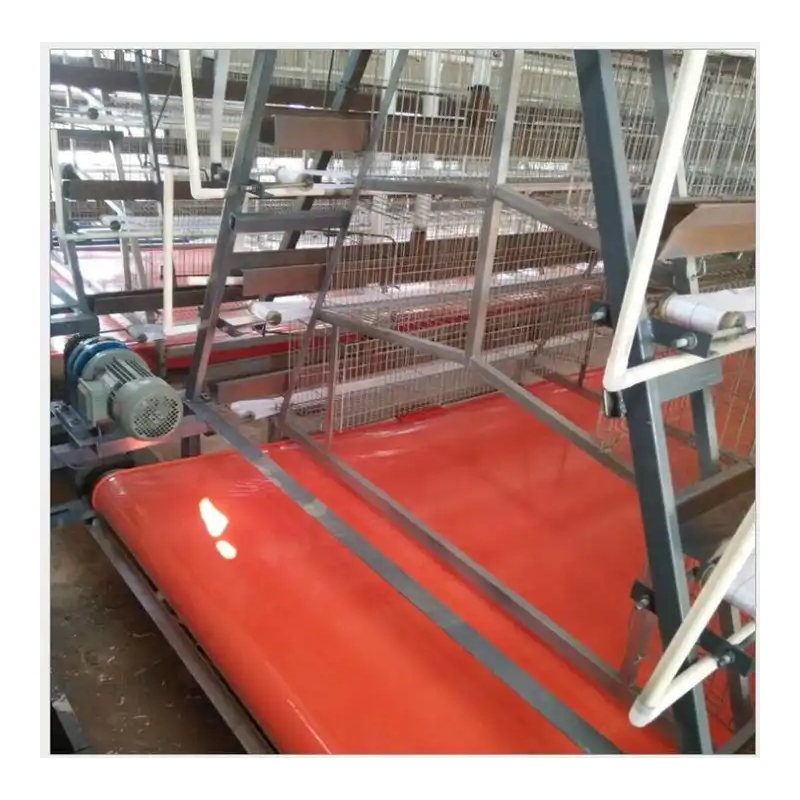Innovative Cage Designs for Enhancing Broiler Chicken Welfare and Farm Productivity
Jul . 24, 2024 02:46 Back to list
Innovative Cage Designs for Enhancing Broiler Chicken Welfare and Farm Productivity
Cage Systems for Broiler Chickens An Overview
In modern poultry farming, the welfare and productivity of broiler chickens are paramount to achieving sustainable and profitable operations. One of the key components in establishing a successful broiler chicken farm is the choice of housing system. Among the various options available, cage systems have gained prominence, though they also bring their own set of challenges and benefits.
Cage systems for broiler chickens involve housing birds in enclosures that are typically made of wire mesh or other materials. These cages can vary in size and complexity, ranging from simple structures holding several birds to more sophisticated multi-tier systems that maximize space and efficiency. The drawn structure aims to achieve an optimal balance between maximizing productivity while minimizing the risk of disease and injury.
Cage Systems for Broiler Chickens An Overview
Another benefit of cage systems is their efficiency in feed utilization. Research indicates that birds raised in cage systems can show improved feed conversion ratios—animals convert feed into body mass more effectively compared to those raised in traditional floor systems. This efficiency not only translates into lower feed costs but also supports the rapid growth rates characteristic of broiler production.
cage for broiler chicken

Despite these advantages, there are significant welfare concerns associated with the use of cage systems. Critics argue that confinement limits the natural behaviors of broiler chickens, such as nesting, foraging, and social interaction. Prolonged confinement can lead to stress and related health issues. Advocacy groups emphasize the importance of providing environments that allow for natural behaviors, urging farmers to adopt more welfare-friendly housing solutions.
As a response to these concerns, some producers are exploring alternative systems that balance productivity with animal welfare. For instance, enriched cage systems provide some enhancements over traditional cages by allowing more space per bird and access to stimuli that encourage natural behaviors. Additionally, free-range and pasture-based systems have gained popularity as consumers increasingly demand ethically produced animal products. While these systems offer greater freedom for the birds, they pose challenges in terms of predator control, environmental conditions, and overall biosecurity.
The choice of housing system—cage or otherwise—must align with market demands, regulatory requirements, and ethical considerations. As consumer awareness grows, the preference for more humane treatment of livestock is influencing production practices across the globe. Farmers must stay informed about emerging trends, including consumer preferences for certified humane treatment and the potential for market differentiation through welfare-friendly products.
In conclusion, the use of cage systems in broiler chicken production presents both advantages and challenges. While they can enhance biosecurity and feed efficiency, concerns about animal welfare cannot be overlooked. The poultry industry continues to evolve, with innovations that aim to balance productivity with ethical treatment. As we advance, finding a sustainable solution that meets both the needs of farmers and the welfare of birds is crucial for the future of poultry farming. Embracing a more holistic approach will ultimately be essential for fostering a more resilient and responsible industry.
-
Automatic Feeding Line System-Pan Feeder Nipple Drinker|Anping County Yize Metal Products Co., Ltd.
NewsJul.29,2025
-
Hot Sale 24 & 18 Door Rabbit Cages - Premium Breeding Solutions
NewsJul.25,2025
-
Automatic Feeding Line System Pan Feeder Nipple Drinker - Anping County Yize Metal Products Co., Ltd.
NewsJul.21,2025
-
Automatic Feeding Line System Pan Feeder Nipple Drinker - Anping County Yize Metal Products Co., Ltd.
NewsJul.21,2025
-
Automatic Feeding Line System - Anping Yize | Precision & Nipple
NewsJul.21,2025
-
Automatic Feeding Line System - Anping Yize | Precision & Nipple
NewsJul.21,2025






